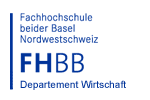Online shopping auction at Schindler AG
Schindler Aufzüge AG is a subsidiary of the Schindler Group of Switzerland, the second biggest supplier of elevators and escalators worldwide. While searching for optimisation potential with regard to procurement, in 2001, the Strategic Procurement Dept. began gathering experience in holding an online purchasing auction. The auction platform and the services of Conextrade were used for the web-based negotiation of conditions with five suppliers for driving elements. The concept and development of new form of negotiating, and the experience gained through it, are the subject of this case study.
1. The company
Background
The Schindler Group traces its origins to 1874. The small family company founded that year is now the second largest supplier of elevators and escalators worldwide. The family still holds a majority stake. Schindler Aufzüge AG of Switzerland is a subsidiary of the Schindler Group and is active in more than 100 countries on every continent. Group sales in 2001 totalled CHF 8.4 billion; its workforce numbers some 40,000.
Schindler Aufzüge AG employs 1,800 people producing high-performance elevators for most global group Its head offices, R&D, training centre and the 24-hour call centre are all located in Ebikon near Lucerne.
Market and procurement situation
Schindler Aufzüge AG is the leading supplier of elevators and escalators on the Swiss market. Business operations comprise consulting for architects, general contractors, owners and real estate management as well as planning, production, installation, maintenance and modernisation of facilities. The maxims applied to all projects are safety and user comfort. In order to supply the market efficiently in a manner supporting customer proximity, 13 branches operate in Switzerland divided into the regions East, Centre and West.
The world market for elelvators and escalators is characterized by marked overcapacities. Schindler tries to compensate for this with innovation, tight cost management and a solid financial structure. Under the R03 project, the company began to focus on raising long-term profitability. It is envisaged that the procurement departments will contribute through increased efficiency and cost savings. The use of E-Procurement instruments is one measure employed to achieve these goals.
Procurement situation
In 2001, the entire procurement volume at Schindler Aufzüge AG came to CHF 280 million for goods categories A and B and approx. CHF 70 million for category C goods. CHF 50 million of the total volume was purchased in the regions mentioned above. Category A/B goods comprise raw materials, components, systems and parts for elevator production and repairs. The Strategic Purchasing Department is under the direction of the head of Supply Chain Management. Operative purchasing activities are strongly decentralised. The performance of the Procurement Department is measured by means of a balanced scorecard broken down to the last employee. This aims to ensure that the procurement strategy is implemented in a consistent way.
Supplier relations
Schindler aims to enter into long-term partnerships with its strategic suppliers. Important suppliers are involved in development and production processes directed at minimising time-to-market and delivery times and reducing logistics costs. The security of supply and quality are equally important. Targeted and systematic procurement marketing activities are intended to help find the best suppliers and continuously improve relationships with existing partners. Supplier performance is measured regularly, evaluated and, if necessary, improvement measurements are defined.
Corporate objectives
Schindler aims to maintain and extend its leading position in the international elevator and escalator business – “Leadership through Service“. To achieve this, the company relies on its existing knowledge of the industry, many decades of experience and the company’s firm intention to serve its customers around the clock in a reliable and exemplary manner, always meeting the customers’ individual needs.
2. E-Business/E-Procurement strategy
In future, the group will seek to enhance coordination and standardization of E-Business activities that have so far been performed on rather a local scale. In the course of pilot projects, Schindler Aufzüge AG has gained various insights from using E-Procurement instruments.
The most important initiatives, some of which are only in the planning stage, are:
- Link-up of internal users and the three regions in a buy-side solution for ordering indirect materials.
- Electronic support of other procurement processes such as:
- Procurement marketing: through the department’s internet site
- Passive sourcing: possibility for all suppliers to add themselves to a database with Schindler on the internet
- Supplier Relationship Management
- Internal platform for communication and data exchange in procurement
- Stronger involvement of suppliers in company processes:
- Access for suppliers to quality indicators and the transfer of responsibility for a continuous improvement process
- Electronic process and system integration with important partners
- Supplier forecast (Extranet) for suppliers with regard to which an integration does not pay.
- Examination and usage of new electronic procurement instruments such as invitations to tender and auctions.
This case study describes in greater detail experiences in using an online purchase auction.
3. Procurement solution: Online purchase auction
Initial situation
In autumn 2001 the Strategic Procurement Department at Schindler Aufzüge AG decided to examine if online invitations to tender and online auctions would be suitable for procuring construction parts. Motor shafts and engine frames were chosen as components from the top segment. They are produced by several suppliers, thus creating sufficient competition for this form of negotiation. The insights gained should be used in the area of sourcing once a planned process redesign goes ahead.
Partners
As its first trial, Schindler was looking for a solution requiring marginal advance investments, receiving good support from the service provider and entailing as little cost as possible. Given these conditions the company chose Conextrade AG’s Online Purchase Auction offer. Schindler was granted special conditions for the pilot auction.
Conextrade AG – Procurement Service Provider
The wholly-owned subsidiary of Swisscom AG employs approx. 75 people and operates the leading electronic marketplace in Switzerland. Conextrade connects processes and systems between business partners and ensures data can be exchanged in a variety of different formats. Different versions of end-to-end integration up to ASP solutions were used, depending on the system environments at hand. As the basis of electronic trading solutions, catalogue and content management form part of the Conextrade service portfolio as well as comprehensive e-services (e.g. online purchase & sale auctions).
Processes, roles and functions
Schindler (the auctioneer) identifies requirements, chooses suppliers (bidders) and invites them to participate in the online purchase auction. Conextrade (the administrator) operates the platform needed to hold the auction and sees everything goes smoothly. Participants must be registered for the platform and trained for the proceedings. During the auction, the suppliers enter their bids via the internet according to previously agreed rules.
Fig. 3.1 shows the parties involved and the procurement functions used. In the ASP solution outlined, these are carried out exclusively by the service provider on behalf of the auctioneer.
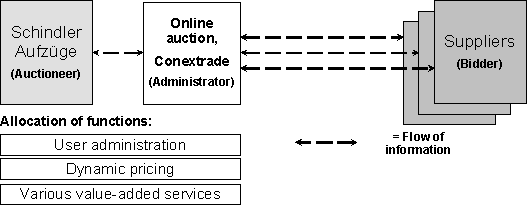
Figure 3.1 : Parties and their functions
Basic types of online purchase auctions
Dynamic pricing is largely affected by the number of parties to the negotiation. If several buyers meet several sellers the process is called “exchange”. If several buyers bid for the offer of one seller, the process is called a sale auction. But if one buyer receives offers from several sellers this is referred to as a purchase auction which is widespread in the field of B2B. The purchase auction is particularly interesting for procurement and will therefore be explained in detail along with details of its different forms.
Purchase auctions with immediate award
In this type of auction, the bidder with the most reasonably priced offer receives the immediate award after the auction. The system employed informs the winner in accordance with the rules previously defined. Since the auctioneers currently do not have enough experience with auctions and awards, they often accord themselves the right to adjourn the definite award for a certain period of time, thus not necessarily being forced to accept the leading offer.
These auction types comprise:
- English purchase auctions (English Reserve Auction)
The English purchase auction is the most common auction type, which does not mean that it is alyways the best. Offers have to be equal to or lower than the leading offer. At the end of the auction, in the case of equal offers, the award is given in the order of price, time of bid and finally amount bid. The English no-ties type is a variant of the English purchase auction and does not permit equal bids.
Another model is the Yankee purchase auction (Yankee Reserve Auction). Here, the award is given in the order price, amount and time of bid. This variant is particularly suitable if the auctioneer intends to split the order for negotiation between several suppliers (“order splitting”).
- Dutch Forward Auction
In contrast with every other auction type, this is a forward auction. At the beginning of the auction an unrealistically low price is set being raised in predefined time and price intervals. The bidder who accepts the price first receives the award.
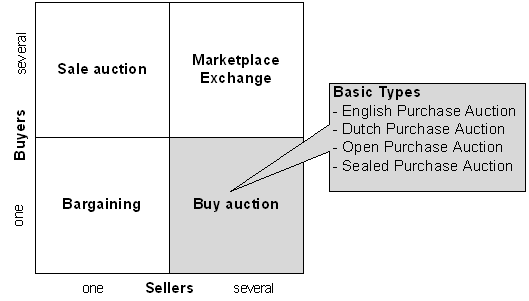
Figure 3.2: Forms of dynamic pricing and basic types of purchase auctions
Auction types with delayed award
These auction types let suppliers place bids within their respective limits, which, depending on the auction process, is often not possible for all auction types mentioned above (if, e.g., the first bidder in an English purchase auction cannot place any bids). The auctioneer chooses this type of auction if transparency with regard to price structure and suppliers’ behaviour is required. At the end of the auction there is no direct award since the auctioneer will often want to evaluate and rate the results with regard to quality. Thus, the award is not necessarily given to the best bid and follows within a previously defined period of time.
- Open Reserve Auction
This auction type does not provide any rules for the bidder with regard to placing a bid. The bidder is informed of the other participants’ current bids. - Sealed Reserve Auction
The rules are similar to those of an open auction, with the different that the bids of other participants are not displayed. Since there is only little competition in this auction type, the “Dynamic Sealed” variant was developed. In it, the bidder is always shown the currently leading bid. However, at each stage, the bidder only has to beat his own last bid, enabling him to react to competition within his own limits.
Technical specialities
Using information technology to hold auctions enables special forms of process support and evaluation.
- Proxy bidding
In online auctions, the system can automatically place bids on behalf of the bidder up to a fixed amount. - Multi-variable bidding
Here the auctioneer not only defines the price as a deciding factor, but also further attributes such as quality characteristics, transport and delivery conditions. The evaluation of bids can be carried out by weighting features or a defined ranking. The auctioneer thus makes use of the possibilities offered by a benefit analysis. Through the consideration of additional appraisal factors, the specific negotiating situation can be supported electronically in an optimal way.
4. Preparing for the online purchase aution
Creation of the bidder package
Instead of directly entering an online auction with its suppliers, Schindler initially asked for offers for four types of motor shafts and engine frames specified in detail from eight suppliers in the traditional way. The suppliers were told that Schindler reserved itself the right to hold follow-up negotiations with regard to offer prices in an online auction. On the basis of the offers with the most reasonable prices, a procurement volume of approx. CHF 1 million CHF resulted. The knowledge gained from the invitation to tender formed the basis for the creation of the bidder package. The bidder package is a document clearly regulating the details of the auction and given to the participants before the auction as support. The most important topics are:
- Specification of the product or the service
- Rules for the planned online auction
- Conditions of delivery and general terms
It was stipulated, for example, that the eight different components be negotiated simultanously, that the reduction of the minimum bid is by CHF 1 and that the first bid has to correspond to the offer made in writting and has to be placed within the first ten minutes. A time period from 9 a.m. to 10 a.m. was determined for the auction of the first component. The auctions of the other components follow in a previously defined order and are delayed by five minutes each. This is designed to ensure that all suppliers can place bids for all components even in the final stages. The Dynamic Sealed auction type was chosen for the following reasons:
- The supplier is informed about competitiveness with regard to price as the leading bid is displayed
- The supplier can place bid within his own limits
- Schindler benefits from higher market transparency
- Schindler can draw conclusions from the bidding process with regard to the behaviour of individual suppliers.
The award is given by Schindler no later than 14 days following the end of the auction.
Setting up the purchase auction
Conextrade set up the auction on its platform based on the rules defined in the bidder package. The bidders were then registered for access to the individual auctions. Since one Spanish supplier participated in the auction, the user interfaces for the bidders were provided in German and Spanish and the currencies Swiss francs and euro (subject to a fixed conversion rate) were given.
To ensure successful execution, the suppliers each received telephone training last one hour from Conextrade. Schindler, the auctioneer, also received detailed instructions on site.
In the week of the actual online auction all parties involved took part in a successful test event. This test served to assess organisational and technical parameters. In order to simulate the situation in a purchase auction as authentically as possible, the identical auction design was used except for the products.
Technical platform
To hold the auction on Conextrade platform, the auctioneer and the suppliers only need to be equipped with internet access. The minimum requirements are a 56kb modem or ISDN, for dynamic displays the browser has to accept Java, Java-Script and Active-X-elements. The messages are sent encrypted (128 bit SSL). For the management of this online auction Conextrade used a Commerce One product, Auction Services 4.1. Data security is guaranteed by use of a redundant platform.
5. Holding the online purchase auction
Process
On 11th December 2001 at 9 a.m., eight paralell online auctions started for the selected components. Within the first ten minutes the bidders had to enter their prices contained in their written offers. The hotline set up by Conextrade for the duration of the negotiation only had to be used once because the supplier did not follow the rules for placement of an opening price. Aside from that the auction ran smoothly. To ensure correct execution and to aid understanding of problems, the entire auction is recorded. In case one bidder has problems with placing a bid, bids can also made via telephone on the Conextrade hotline.
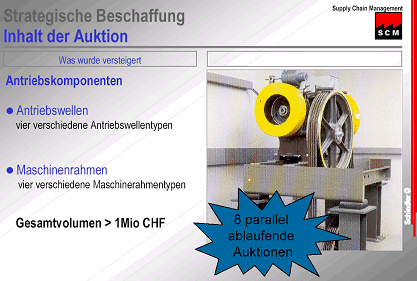
The Procurement Department at Schindler projected the auction on a big screen and invited interested employees to this event. The individual negotiations came to volumes between CHF 12,000 and 300,000 and developed a little less dynamism than expected. After the opening offer the receipt of bids was typically low, increasing towards the end of the auction (cf. Fig. 5.1). To give bidders the chance to place bids in all auctions and to take part in the final stages of all four auctions, the end of the auctions were staggered. Each negotiation ended no sooner than five minutes after the previous auction.
After the auction, Schindler evaluated the results together with Conextrade. Before the definite award the optimal delivery combinations from the eight auctions were calculated and logistics and quality aspects taken into consideration. The suppliers were informed of the result within 14 days. Only in two cases did the supplier with the lowest price receive the award – a result rather untypical that was due to the design and logistical advantages of one bidder. This was also openly communicated to the other auction participants once the decision was made.
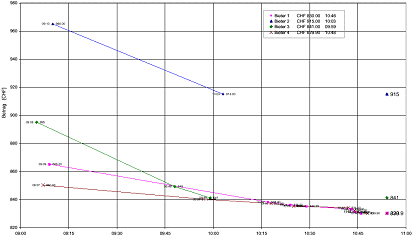
Fig. 5.1: Process of the bids for one of the components
Benefits
In contrast with the offers given in writing before the auction, addditional reductions of costs, between a minimum of 3% and a maximum of 19%, were achieved. For the entire volume put out to tender a price reduction of 6% was achieved, in other words, cost savings did not entirely meet expectations at Schindler and Conextrade. However, the negotiating process was shortened considerably compared to traditional proceedings in writing or by telephone.
In addition, Schindler gained interesting insights in the current market situation for these important components and in the competitive behaviour of its suppliers.
Costs
Holding the auction using a service provider did not incur any IT costs for Schindler. The first auction still involved relatively high internal costs that can be reduced considerably with growing experience (e.g., concept, training, creation of the bidder package).
Conextrade offers different price models. On the one hand companies that want to carry out auctions sporadically can choose a model based on a fee (2%) depending on volume. On the other hand, for regular use of this service, different packages with a specific number of auctions each are available. Under this model the company pays a annual basic fee and a reduced service fee depending on volumes (with a high number of auctions this fee can fall to 0.5% of the volume). Conextrade and the auctioneer calculate the price model that suits best the auctioneer’s projects planned.
Profitability
The head of the Strategic Procurement Department expects that highly competitive online purchase auctions for products and services can be run in an extremely efficient way with a corresponding internal process redesign. Therefore, the potential within the company should be examined in more detail.
6. Succes factors
This solution’s special features
The ASP solution for the performance of the online purchase auction selected by Schindler is based on a proven software product (Commerce One) in the field of E-Procurement. As a subsidiary of Swisscom and in its role of a neutral intermediary, Conextrade has the credibility and the trust required for successful operation of an auction platform.
As administrator, Conextrade plays a neutral role at the auction and guarantees its efficient and smooth performance – a task being highly underestimated by operators with their own auction solutions.
Today, within the procurement process, the solution introduced primarily covers the agreement phase. However, there are efforts to cover the information and processing phases as well by means of integration of additional business logic and support for additional interfaces. In this way, data from ERP systems, catalogues or invitations to tender could be adopted for the auction making their results resuable for the operative processing of the purchase as far as possible.
Changes
Whether online purchase auctions will in future be used more frequently as an instrument of procurement by Schindler is a matter for ongoing discussion. In a first step, products which are suitable for this form of negotiation will be examined. Aside from price savings, Schindler also sees a considerable potential for optimisation of the procurement processes, especially with regard to negotiations with suppliers all over the world.
Suppliers’ reactions varied. Some of them did not want to get to know this new instrument and felt forced to use it. Their view was that the auction is not suitable for orders featuring such specific components, since there is not enough emphasis, if any at all, on the attendant customer service. However, other bidders said that they were able to draw important conclusions from the auction with regard to their competitiveness. In addition, the bid and negotiation process is more transparent for them. In order to improve written bids previously submitted, the bidder had the chance to fully explore the room for negotiation together with his suppliers.
Lessons learned
The performance of the online auction by neutral service provider has passed the test. Thus, responsibility for processing can be given to a company with the corresponding expertise.
Expenses for the invitation to tender and the preparation of the information required for the performance of the auction were still too high. On the whole, the project took around five weeks. However, the expenses and the time span should be reduced considerably with growing experience. Conextrade estimates that, in future, an auction can be completed within one week. The process could be shortened if the suppliers were directly invited to participate in an auction without a previous invitation to tender or if the initial invitation to tender is also made online and the resulting data is adopted directly in the online purchase auction.
Schindler and Conextrade expected a stronger auction dynamism. The reasons why this was not the case lie in the previous invitation to tender and in the differring appeal of individual order volumes. In addition, the auction was a new experience for most of the suppliers, a circumstance revealed in their rather cautious behaviour. The auction process showed that some suppliers did not have any targeted negotiation strategy. It therefore seems appropriate to reduce the complexity of online auctions as far as possible until the negotiating parties have gained enough experience with this dynamic instrument.
The use of an online auction for a follow-up negotiation of conditions achieved by means of a conventional, paper-based invitation to tender resulted in another, but rather minor additional cost reduction. For Schindler, the question is whether a targeted direct follow-up negotiation with the suppliers would have lead to a similar result. On the other hand, there would have been higher cost reductions if the entire negotiation process had been handled online. Online auctions are particularly suitable for goods subject to strong competition. Another requirement is a sufficiently high order volume per auction (at least CHF 200,000) and enough participating suppliers.
Conclusion
Online purchase auctions offered by neutral service providers are a modern instrument of procurement, suitable for bigger requirements exposed to dynamic competition. Aside from price reductions, online auctions lead to an important shortening of the negotiation process without requiring investments in internal IT infrastructures. Since all bidders are subject to the same standardised conditions, the auctioneer gains a transparent overview of the existing market situation.



